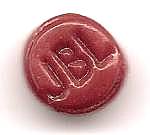For all you acoustical folks......
- When calculating/predicting boundary interference null/peaks, what is the appropriate reference location to use within the driver? RPG says assume it is at the dust cone. Another respectable source suggests it's further back - behind the voice coil in the magnet area.
- Would this location change when calculating rear boundary as opposed to side boundary?
- Does room mode frequency shift up or down with added absorption to a room? A speaker cabinet is just a small room. What happens there?
Thanks



 Reply With Quote
Reply With Quote






